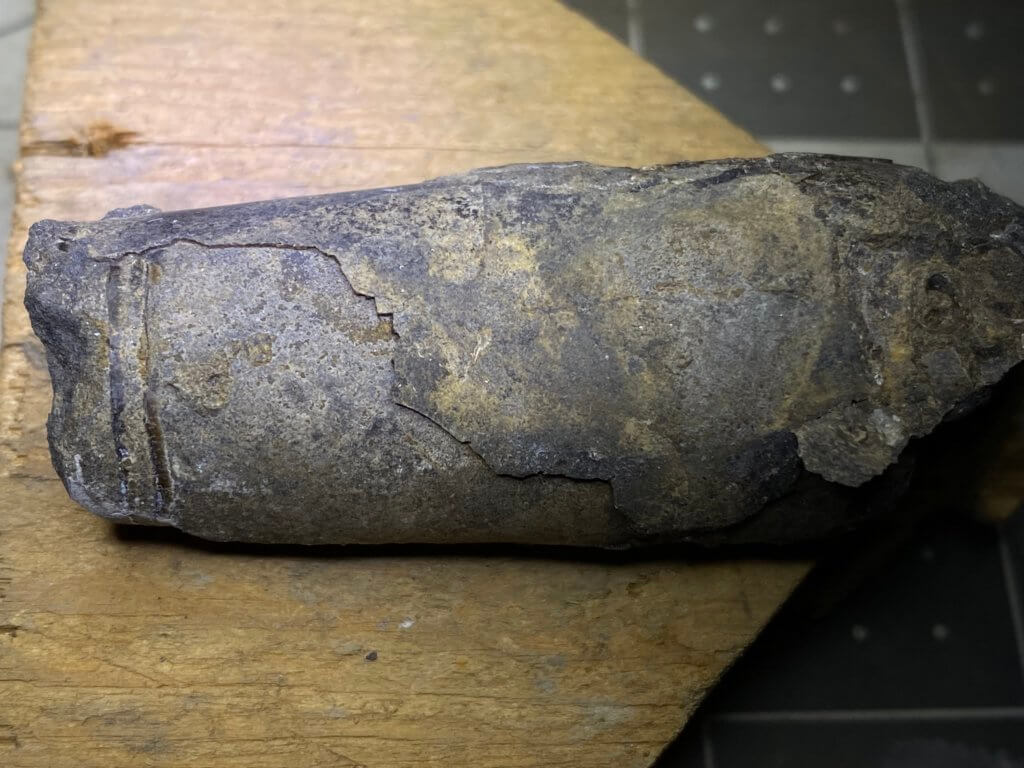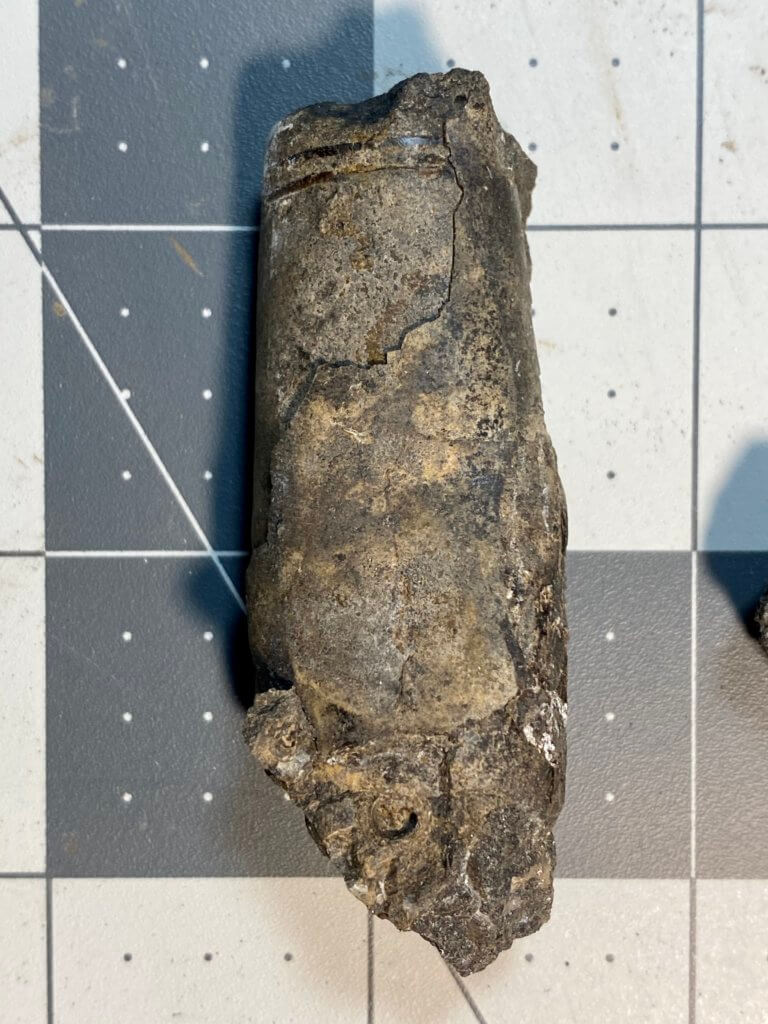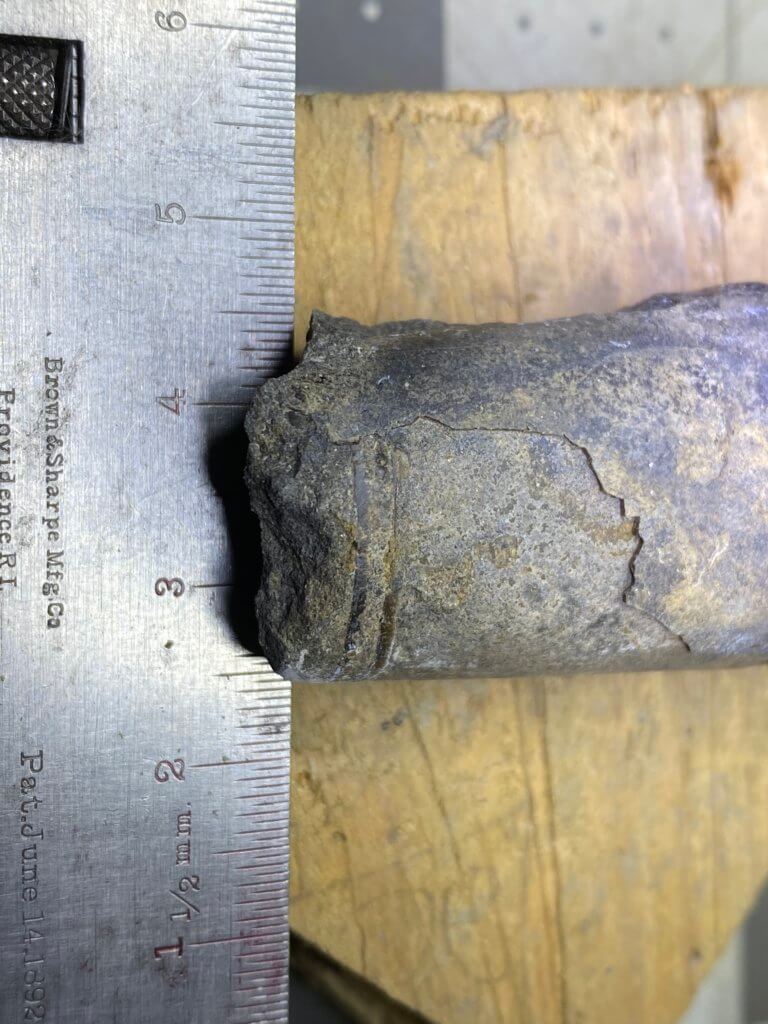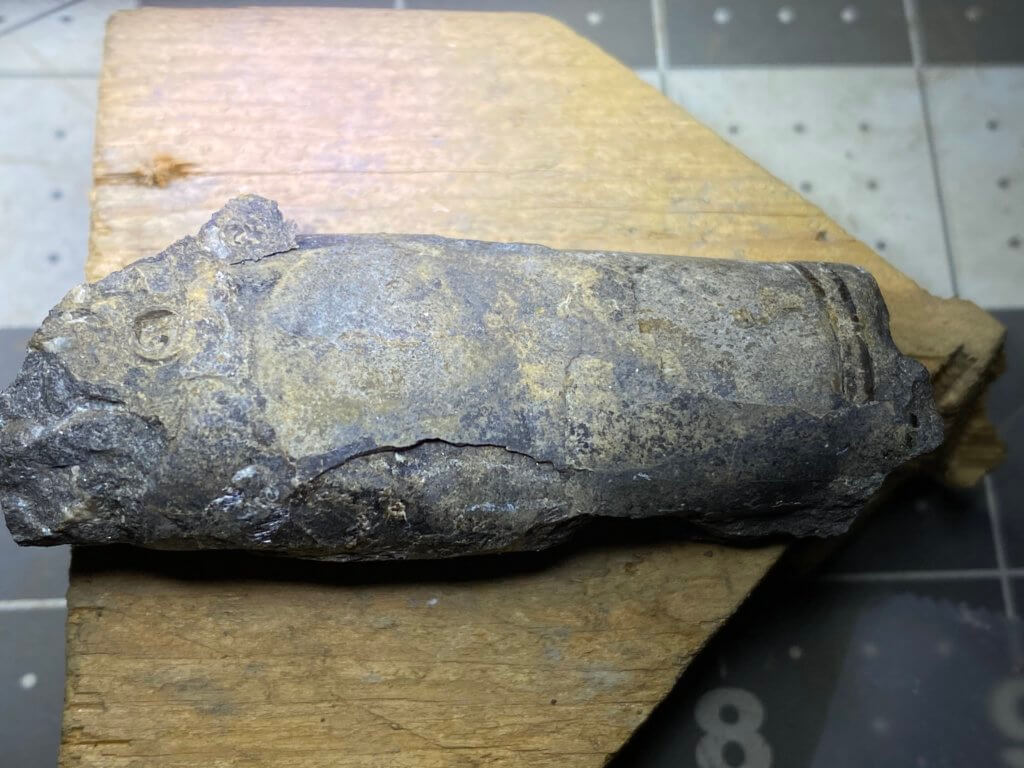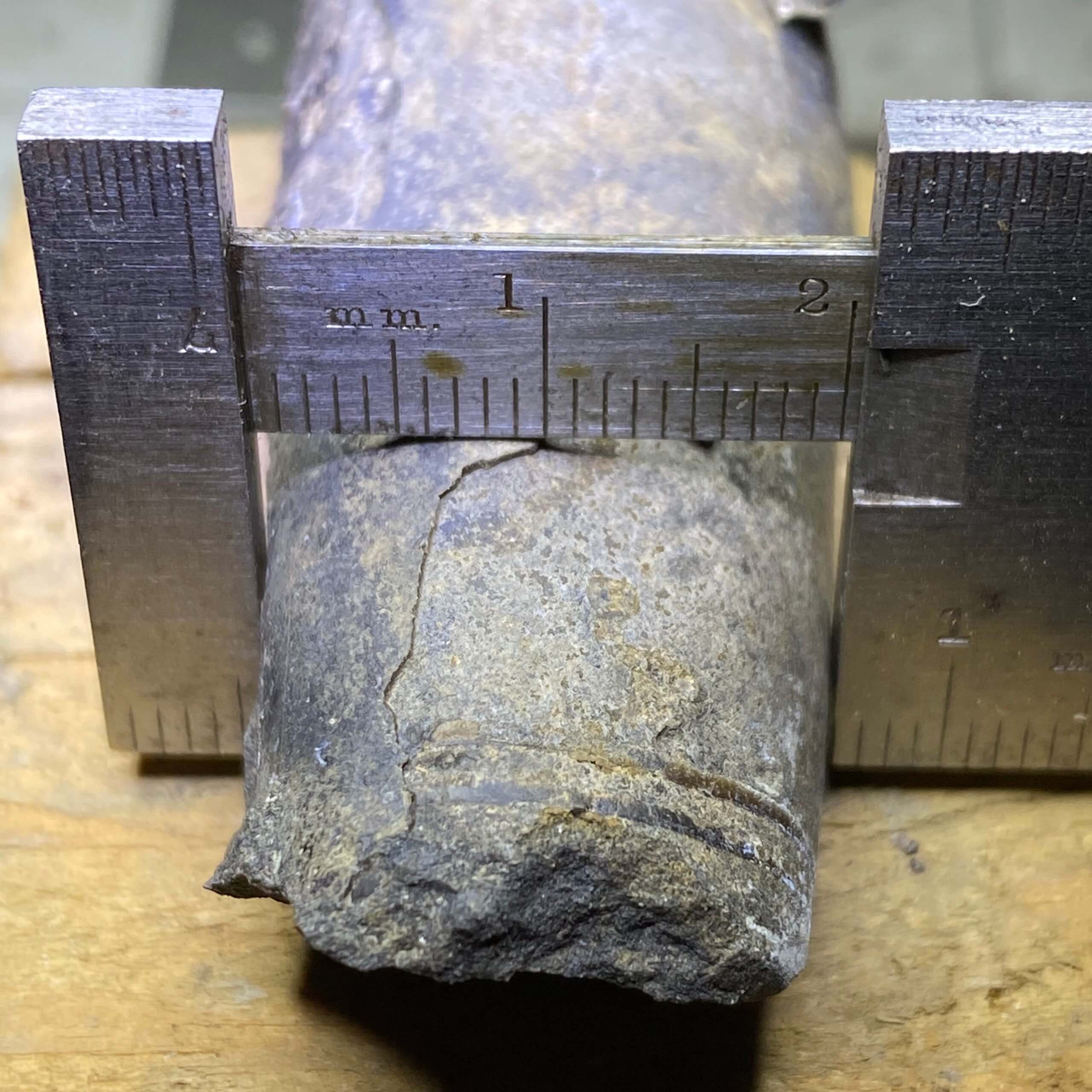Catalog Number: CG-0036
I often find the body chambers of these cephalopods embedded in limestone. They come out as one piece but rarely are attached to the body. A specimen I freed today had two suture lines on it. Having a collapsed area on the chamber is another common feature, one that leaves a pointed long oval shape. This seems to indicate that this part of the shell was thin, and would buckle under the weight of sediment after burial. A thin shell can be seen in the first photo below.
